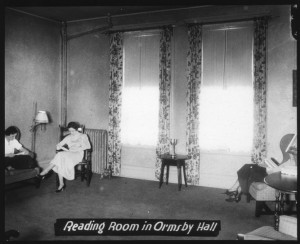In honor of our 500th blog post, we thought we’d take this opportunity to share some of the fun stuff we’ve been doing with social media here at the Mudd Library. Want to be the first to know about what’s happening at the Mudd? Follow us on Facebook to learn about our events, view photos, and read comments from other library users. We love to use this space to interact with our patrons and learn about what they want to see in the library. Most recently, we were able to make many patrons happy by fulfilling a Facebook request for a subscription to The Onion. If it’s Twitter you follow, we’re there too! We think the short posts make it a great place to share interesting library acquisitions, pertinent local and library-related news, event announcements, and of course, our newest blog posts.

More interested in seeing what’s happening at the Mudd rather than reading about it? Our photostream on Flickr is where we post the bulk of our library event photos. Here, you can see pictures from our annual Welcome Week Open House, Cindy Appreciation Day, Canine Therapy, and more! You can also find images of some of the library’s advertisements, such as our National Library Week posters and ways we use QR codes.
Next time you come to the library, make sure to check in with Foursquare. Check in three times and claim a mini Mudd Library notebook and pen! Keep checking in, as more specials are in the works.
For your convenience, we’ve compiled our social media activities in an easy-to-follow webpage.

Even before Facebook and Twitter, cell phones and computers, even 100 years ago, Lawrentians took photographs to capture and share information about the campus and community. So what did that look like? Well, the short answer is: it looked a lot different. You can visit our new digital collection of glass slides from the Archives to check it out!






 You say “IPA” to most people around here and they think “India Pale Ale.” Mmmmm. Beer. But singers are different. Their IPA is the International Phonetic Alphabet, that mysterious combination of other-worldly symbols that only singers can decipher. It’s their secret handshake. Now the Mudd has access to
You say “IPA” to most people around here and they think “India Pale Ale.” Mmmmm. Beer. But singers are different. Their IPA is the International Phonetic Alphabet, that mysterious combination of other-worldly symbols that only singers can decipher. It’s their secret handshake. Now the Mudd has access to 





